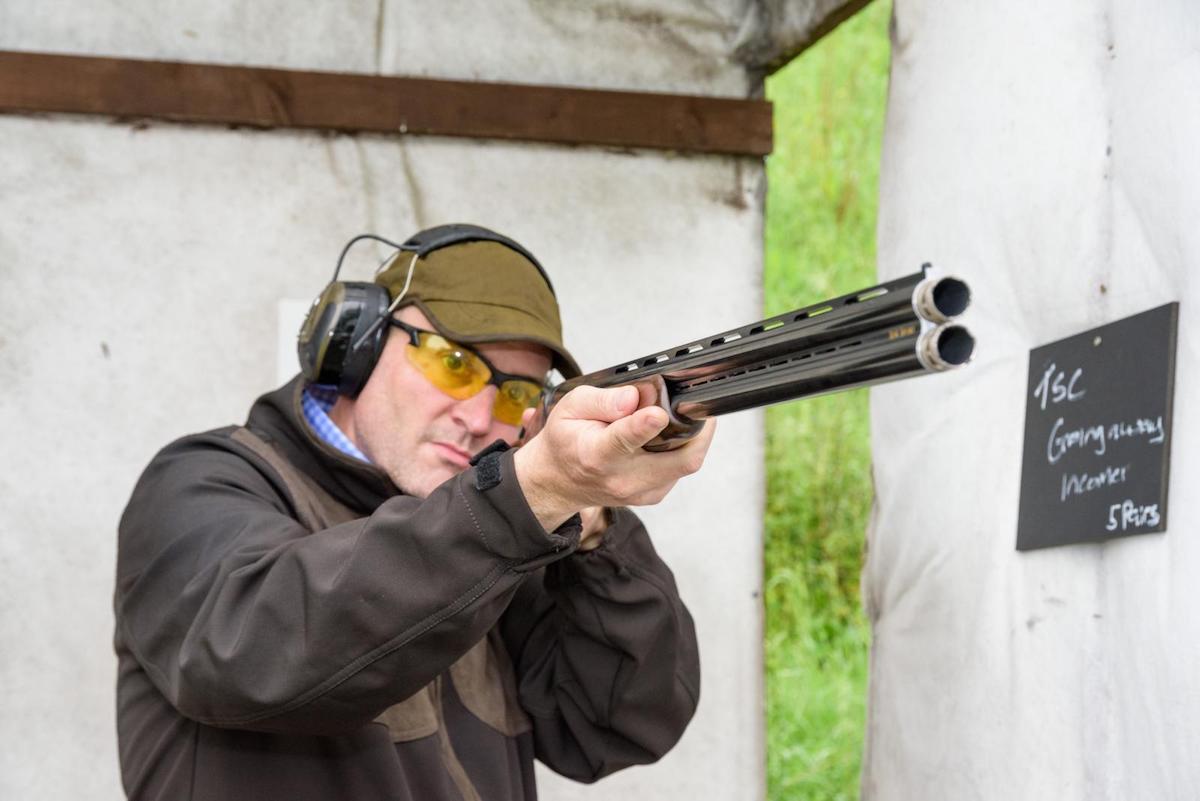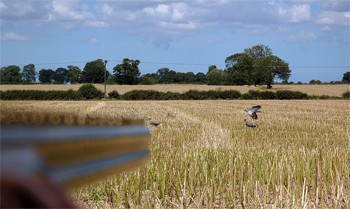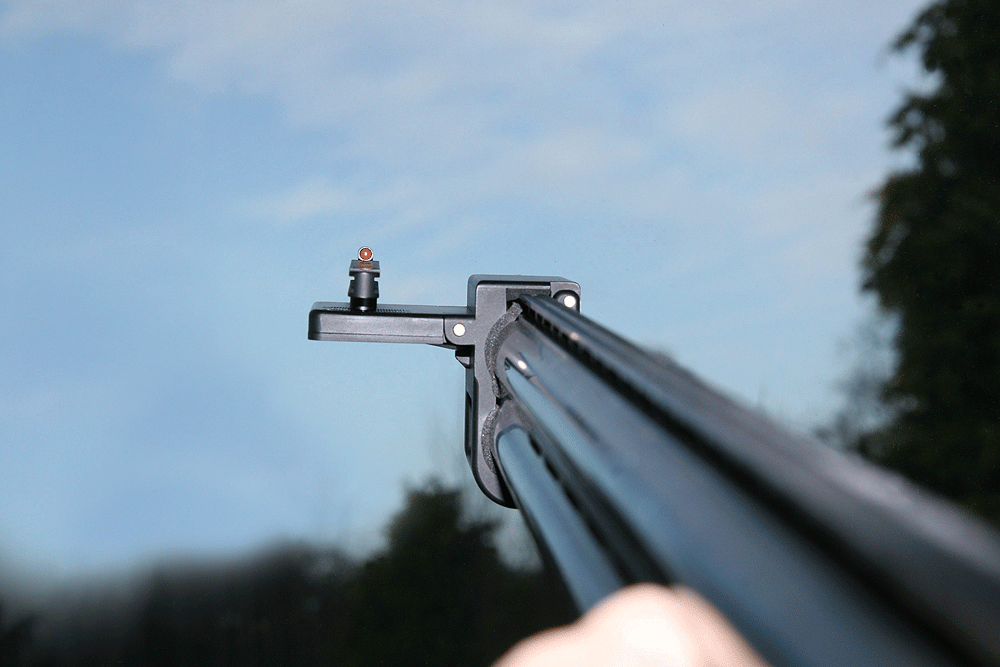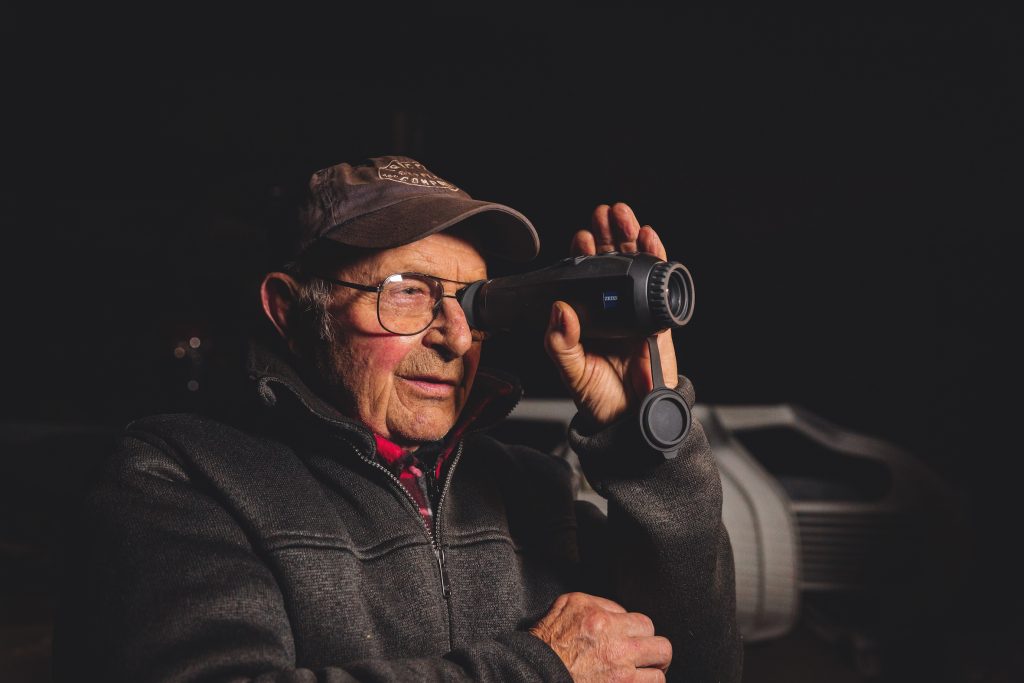Do you have issues with eye dominance? Eye dominance is the tendency to favour one eye to the other while…
Win CENS ProFlex DX5 earplugs worth £1,149 – enter here
Eye dominance and shooting
Eye dominance and your shooting! Everyone can improve their shooting by understanding more about eye dominance.
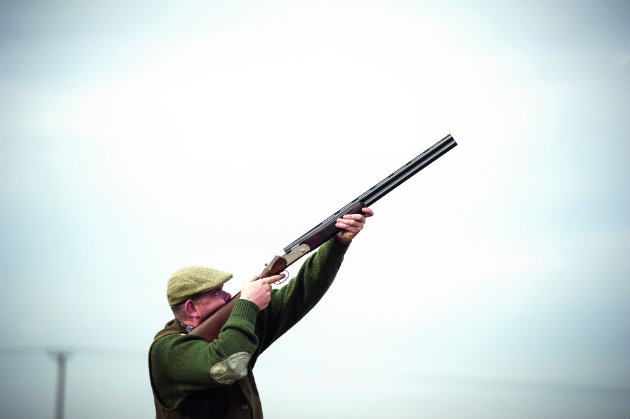
What you see with your shooting vision is a subject I find very intriguing.
Let’s start by by distinguishing between visual acuity and eye dominance.
Visual acuity concerns the physical ability to focus on an object at various distances and under various conditions.
Eye dominance is about how your eyes direct your pointing (an essentially cognitive process linked to visual perception and the interpretation of visual stimuli). Simply put – and there are grey areas – the two are not related.
So how can you shoot well?
To shoot well we must be able to focus well at distance with natural or corrected vision and we must know where we are pointing.
So to start with, always have an annual eye check. If you have not had one recently, book an eye test soon. The results could make a massive difference.
Testing has a number of benefits, not the least of which is improving your shooting. It will ensure that your eyes are focusing as they should and an optometrist or optician will pick up early signs of eye disease such as glaucoma, cataracts and even diabetes.
Astigmatism, an individual difference rather than a disease process, may also be discovered (it is when the cornea has an irregular curvature which will cause a refractive error requiring correction).
Glasses for shooting
Everybody should wear glasses for shooting for safety reasons and many shooters have correcting lenses in them. You should consider the position of your head on the stock when choosing them. The design of the frames must keep the lenses well up, and it must anchor the spectacles securely to your head.
Lenses must be relatively large and impact resistant too.
Eye dominance terminology
– Absolute dominance in the eye looking down the rib – keep both eyes open and focus locked on the bird, the bird and nothing but the bird.
– Predominant dominance (one eye is predominantly but not fully dominant) in the eye looking down the rib – keep both eyes open with appropriate cast, or, squint an eye as the gun comes to the shoulder or otherwise block the vision to it.
– True cross-dominance (eg right-handed but left eye dominant) – squint/close opposite eye, block vision to it, use a full crossover stock, or change shoulders.
– Intermittent or occasional cross-dominance – probably caused by poor focus discipline or bad gun fit. Consider what rib picture you can see when the gun is mounted at 45 degrees with normal cheek pressure.
– Central vision (neither eye dominant) – close eye opposite rib, block vision to it, consider acquiring a semi-crossover stock.
– Indeterminate dominance – both eyes fighting for control, close eye opposite rib or block vision to it.
Different types of dominance
Most adult men have one eye that directs their pointing, right-handers tending to have a dominant right eye and the bulk of southpaws a dominant left. When they point at a distant object with both eyes open, they will line up with one eye rather than the other. The dominant eye, the fingertip, and the selected mark, will all be points on a straight line. Shooting is easier and has more effect if you can shoot with both eyes open.
Binocular vision facilitates the estimation of distance, speed and angle and helps one to gain the full benefits of natural hand to eye co-ordination. If you doubt it try catching a ball with one eye shut. But, do not believe those who say simplistically that everyone should shoot with two eyes. It’s not as simple as that.
Blurred extra image
Although one eye usually directs the pointing process as discussed, a blurred extra image of the pointing finger (or of your gun barrels) will usually be seen in peripheral vision.
This is a phenomenon caused by binocular disparity. The ‘ghost’ image usually appears a couple of inches to the side of the clearer one. You can demonstrate this to yourself now by pointing at a distant object. Do you see that extra finger? I will lay odds that you do, but the question is how much does it distract you?
How can I help my eye dominance problem?
When I was younger I had a very dominant right eye, but as I have grown older I have developed…
Get your eye in
The device that corrects eye dominance
Some are not distracted by the phantom finger one jot when pointing the mind, the cognitive process of perception, suppresses the secondary image. Some, however, are distracted so much that they instinctively shut an eye. Others may not do this but are subconsciously distracted and may not be pointing where they think as a result.
So, here’s the bottom line: only those who have a master eye which clearly corresponds to their ‘handedness’ are well advised to shoot with both eyes open.
Meanwhile, it is possible to be cross-dominant e.g. right handed but left eye dominant, or to have central vision where neither eye is dominant, but the effects are balanced. Or, to have predominant dominance, where one eye is predominantly, but not fully, dominant.
Indeterminate dominance – where both eyes fight for control – is also commonly seen in women and young shots. In all these cases, keeping both eyes open can result in confusion and subconscious error.
You may not have dominance in one eye
Many believe erroneously that they are absolutely dominant in one eye when in fact they are not. Eye dominance is subject to change as well. Middle-aged men often suffer a loss of shooting form that is attributable to an age related shift in their dominance.
Typically, the right-hander who previously had strong right dominance starts to suffer some pull from the left eye in his 40s or 50s (the usual cure for which is a bit more cast, though squinting may also be considered).
What may cause a temporary change
- Fatigue (computers and motorway driving)
- Ill health
- Gunfit
- Stock that is too low
In young men, eye dominance may not stabilise until the teens. There are also very significant sex differences as mentioned. Unlike men, few women have or develop eye dominance corresponding to their handedness.
Indeed, few women are absolutely dominant in either eye. They usually have indeterminate eye dominance as highlighted, but this is often misdiagnosed as true cross dominance with more misinformed advice typically following, for example, the suggestion to change shoulders – only a sensible option in the context of two-eyed shooting when eye dominance is absolutely or nearly absolutely on the opposite side.
Finally – and accepting certain implicit complications and potential contradictions – no-one is quite sure to what degree, if any, eye-dominance is ‘learned’. Not only does eye dominance seem to change with age, and differ with the sexes, it is also interesting to note that the distribution of eye-dominance appears to vary with different sports, implying that there may be a learned element, or that certain sports are self selecting.
In hockey, for example, players are much less likely to be absolutely dominant in one eye than they are in shooting. Why this should be – and it may relate to the need to be aware of threat to either side in the former sport – might make the subject of a most interesting PhD.
Testing for eye dominance in shooting
Because there is much potential for confusion and error, and because the implications of diagnosis are so important, testing for eye dominance should routinely be carried out using several methods and with the greatest care. I usually begin by asking the person under scrutiny what hand they write with, and then inquire if they have any tendency towards ambidexterity, usually an indication that they will not be absolutely dominant in one eye.
From there, I request that they stand about 10 feet away and square to me.
I ask them to point the index finger of their dominant hand at my master eye making sure they keep both eyes open and fully extend the arm and finger. I will ask them to repeat the procedure with the weaker hand. Once this has been done, I will ask them to point with both hands more rapidly.
This quick-pointing test may reveal that an apparently non-dominant eye is having some subtle effect, and usually reveals itself by a slight shift towards the opposite eye as the finger comes up to point.
If the client is clearly lining up with one eye all the time, no matter which hand is used, and no matter the tempo of pointing, it is probable this eye is the master. The person with true central vision – a rare condition – will point confidently at you with a finger which appears to be in line with the bridge of their nose.
However, if you note the client is having difficulty pointing, if the finger is moving around and not settling, if he or she tends to squint one or other when trying to line up, or if there is a tendency to line up with one eye with one hand, and with the opposite eye with the other, it is probable that eye dominance falls into one of the other categories noted.
On to stage two. After pointing with the index finger of right and left hands deliberately and then more rapidly, I will routinely ask the client to ‘make a circle’ by bringing the pads of thumb and forefinger together and to extend the arm and look through the circle at my eye, again repeating the procedure for both hands.
Circle tests are especially helpful because the tester can see if the eye is centred in the circle (indicating absolute dominance) or to one side (indicating predominant or shifting dominance).
After performing these tests, a provisional diagnosis may be made, but it cannot be confirmed without a) watching the client fire at a mark on a pattern plate several times with both eyes open and b) watching the client shoot a variety of clay targets.
These should include straight going away birds, true crossers from right and left, and birds driven straight and slightly right and left of centre. If there is a significant problem, you will usually see the client consistently shoot to one side of the mark when both eyes are open, but not when one eye is closed.
Dealing with the issue of eye dominance and shooting
Not everyone shoots as the first tests might indicate. I meet many experienced shots who have a subtle eye dominance issues that only have significant effect in some situations – for example, straight driven birds going slightly right of centre, a bogey bird for some right handed, predominantly right master eyed shots. One must be extremely observant.
Gross eye dominance problems are easy to spot, such as being a yard in front of crossers from the right, but a yard behind those from the left, but more subtle conditions require all the intuitive skills of Holmes and the methodology of Watson to pin down.
Those with true cross dominance will not be able to keep both eyes open unless they acquire a special gun or learn to shoot off the opposite shoulder. The rare birds with central vision will only have the option of two-eyed shooting with a special gun with a semi-cross over stock.
Those who are predominantly dominant in one eye may be able to shoot with two eyes if they modify their stock with more cast, or they may be as well advised to squint. Squinting cuts down the field of vision, but, it is one of the easiest solutions for eye dominance issues whether one is dealing with cross dominance, predominant dominance or central vision.
For those who cannot close or squint an eye (another significant minority), a small spot carefully positioned or painted on one’s shooting glasses can be an effective solution. It needs be located very precisely, with head down on the stock in a normal shooting position, and a consideration needs to be made for head movement up down and sideways.
The spot must not be too small – about half an inch is ideal. Another remedy, as used by Robert Churchill, is to raise the thumb of the front hand to block the vision of the muzzles to it.
Various accessories are available for those with eye dominance issues. Hand guards for side-by-sides incorporating an obturator looking like one of Mickey Mouse’s ears used to be quite popular.
Special sights are available which may only be seen by the eye looking down the rib too, as marketed in the past by Weaver and others and, today, by EasyHit and HiViz.
British gunmakers once had a great fondness for semi and full crossover stocks and stocks with other extremes of cast. The former, expensive, creations have an obvious dog-leg in them. They may have delighted their makers, but crossover stocks have a number of disadvantages beyond cost; they are ungainly, awkward in the grip, and increase felt recoil, as will any stock with excessive cast, though sides-by-sides can usually manage more than over-unders.
Conclusions
The best solutions are simple. If you suspect any dominance issue, it is always good advice to try squinting to see if a sudden cure is affected. Most people with a slight eye dominance issue will, however, be best advised to keep both eyes open and consider a slight adjustment to the cast, after consultation with a gunmaker or instructor. Those with more significant problems, or those who do not want to alter the gun in any way, may be best advised to squint or block their vision to the offending eye by some means.
If you are truly cross dominant and not too set in your ways, learning to shoot off the opposite shoulder may make sense (though it is often suggested too readily). Any other points?
Short barrelled guns can aggravate eye dominance problems, while longer barrelled guns seem to be more forgiving. It is always better to have a stock a little too high than too low. And, beware of guns which have very thin combs, which may cause the head to tilt, and those with very thick combs, which may have similar effects to cast in the wrong direction. Most important of all keep your eyes on the bird and nothing but the bird. Even those who are absolutely dominant in the eye looking down the rib may suffer from bouts of cross-dominance if they let their focus stray to the muzzles.
Mike Yardley, is a London University qualified psychologist and a Fellow of the Association of Professional Shooting Instructors.
Related Articles
Get the latest news delivered direct to your door
Subscribe to Shooting Times & Country
Discover the ultimate companion for field sports enthusiasts with Shooting Times & Country Magazine, the UK’s leading weekly publication that has been at the forefront of shooting culture since 1882. Subscribers gain access to expert tips, comprehensive gear reviews, seasonal advice and a vibrant community of like-minded shooters.
Save on shop price when you subscribe with weekly issues featuring in-depth articles on gundog training, exclusive member offers and access to the digital back issue library. A Shooting Times & Country subscription is more than a magazine, don’t just read about the countryside; immerse yourself in its most authoritative and engaging publication.






